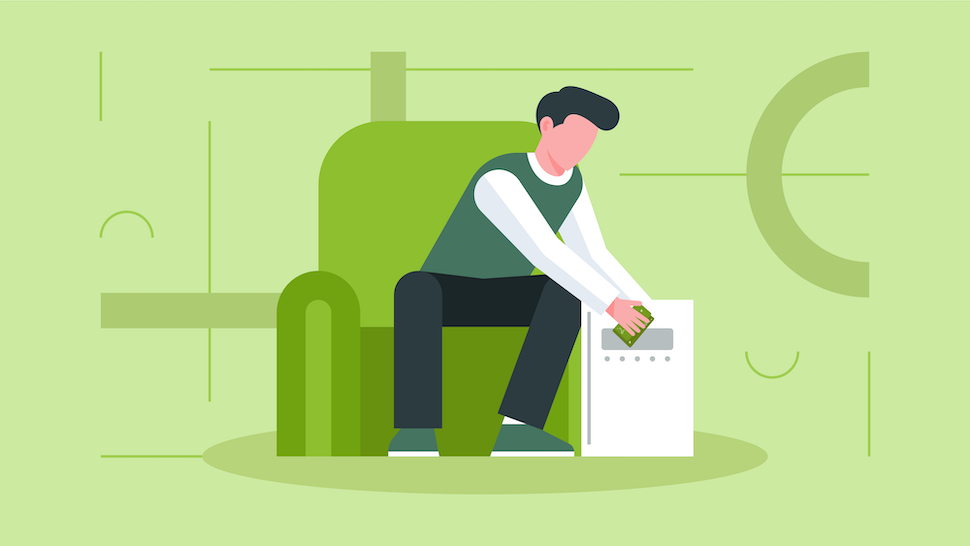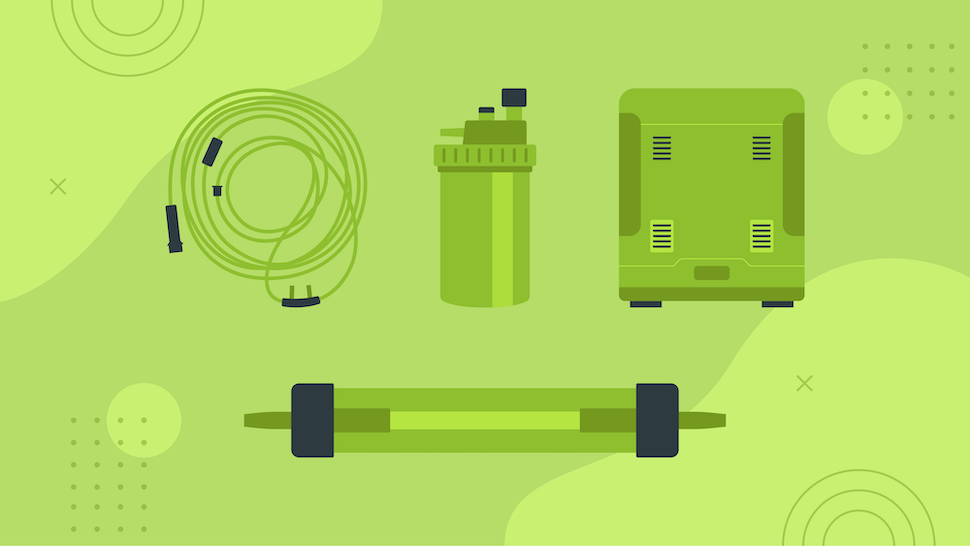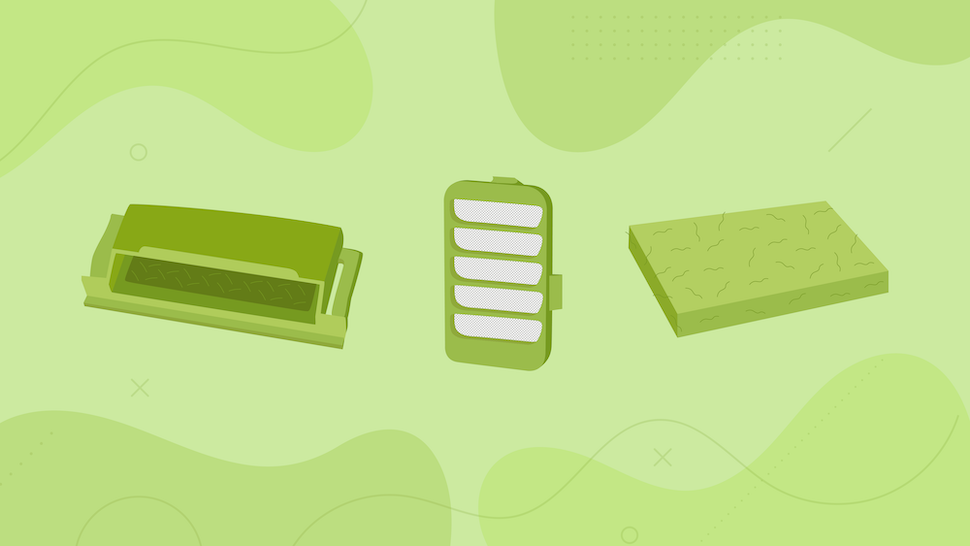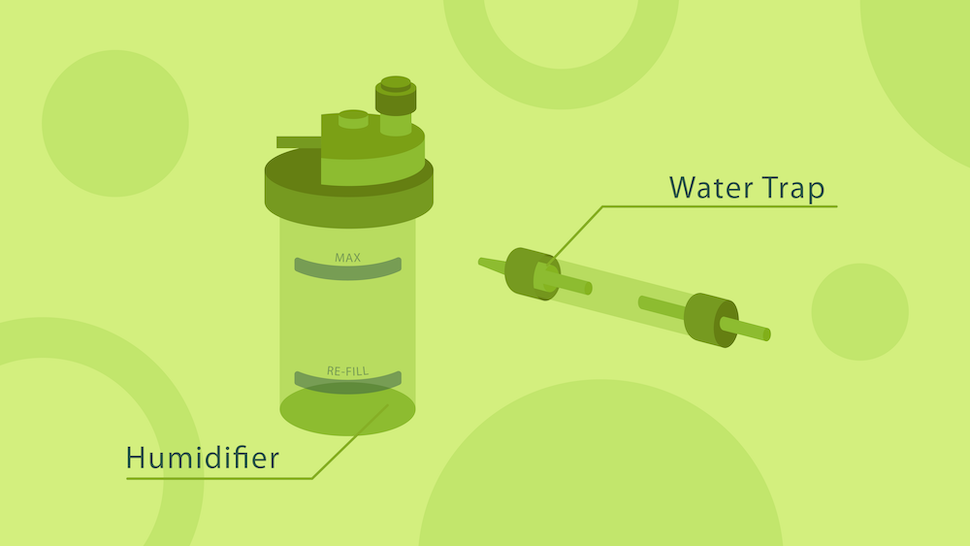Simple steps you can take to ensure long-lasting performance and safe operation from a portable or stationary oxygen concentrator.
Oxygen concentrators are an essential component of oxygen therapy and are sometimes used alongside CPAP machines for supplemental oxygen delivery while also alleviating the symptoms of sleep apnea.

While these machines are quite simple to operate, they require regular maintenance to ensure optimal performance, safe operation, and long running life.
In this guide, we’ll cover everything you need to know about keeping your oxygen concentrator running like the day you received it!
Oxygen Concentrator Components
Before we dive into what you need to do to maintain your oxygen concentrator, we need to look at the various parts of the machine to be sure you have a solid understanding of what you need to maintain.

- Concentrator casing: This is the outer shell around your oxygen concentrator. In most cases, this is durable plastic and is sometimes textured.
- Oxygen tubing and cannula: The tubing which runs from your concentrator to your face or mask. In most cases, the cannula is a separate part that connects to the tubing with a T-adapter to allow for connection to oxygen bleed-in adapters or CPAP masks.
- Cannula nozzle: The nozzle or nipple on the oxygen concentrator where you attach the tubing.
- Air vents: Vents on the concentrator chassis that serve to exhaust air and keep operating temperatures down.
- Filters: Typically used on air intakes to help keep larger particles—such as dust or hair—out of the airstream.
- Humidification chambers or water traps: Help to either add moisture to the oxygen stream or prevent excessive moisture from collecting in the tubing.
Keeping Surfaces Clean
A clean concentrator is a safe concentrator.
As such, keeping dust and grime off its plastic surfaces is a simple part of ensuring your concentrator offers long-lasting, reliable performance.
In most cases, warm water with a mild soap (such as unscented dish detergent) or a mixture of white vinegar and water and a soft, lint-free cloth is all that’s needed to keep things clean.
If you need to clean exhaust vents or other small parts, a cotton swab can provide precision cleaning without the risk of damaging or soaking parts.
The exact schedule you should follow when cleaning the outer shell of the concentrator will largely depend on your environment.
Dusty areas or homes with pets will probably see the case collect debris faster.
But in most cases, a quick wipe down once a week will keep things looking and running great for years.
Take care not to soak the case or allow moisture to run into any openings.
You should also never submerge the case or spray water or cleaners directly onto the case.
Doing so could result in ruining sensitive electronic components leading to premature failure or risk of electrical shock in extreme cases.
Clean Air is Safe Air
While oxygen concentrators are capable of providing oxygen with purity levels of up to 95%, you need to ensure that everything leading from the concentrator to your lungs is clean as well.
Dirty tubing, cannulas, bleed-in-adapters, or cannula nozzles can all cause health risks, including respiratory irritation, infections, or reduced oxygen saturation.
Fortunately, keeping these parts clean is easy.
For cannula nozzles, simply wipe them down with a damp, soft cloth and mild soap or unscented detergent.
Alcohol wipes or CPAP machine cleaning wipes can also serve as a convenient alternative, especially when you need to clean your nozzles on the go.
For tubing, cannulas, and bleed-in adapters, you’ll want to soak the components in a mixture of warm water and mild soap for a few minutes.
Cleaning any openings with a soft cloth or cotton swab will help to avoid blockages and keep critical areas clean and clear as well.
After cleaning with soapy water, refill the sink with a 1:10 mixture of water and white vinegar.
You should take care to ensure that all soap residue is rinsed from the sink before refilling.
Soaking parts in this mixture will help to remove microbes and other issues soapy water might miss.
It also helps to neutralize any odours which might have built up on your tubing, cannulas, or bleed-in adapters.
Rinse all parts with warm, clean water and allow them to air dry completely before reconnecting them to your machine.
Leaving your machine running while washing or rinsing your cannula can also help to ensure that water doesn’t become trapped in the tubing or mask.
Exact cleaning schedules will depend on how frequently you use your oxygen concentrator.
However, in most cases, weekly cleaning should keep things running safe and smooth.
You should also inspect any tubing, cannulas, and adapters for cracking or wear and replace them as needed.
With regular use, the tubing will require replacement once to four times a year.
Cannulas are typically replaced more frequently—sometimes as often as every two weeks.
Bleed-in adapters are more durable and can often last for months or even years before replacement is required.
Visually inspect the adapter’s nozzles and surfaces for cracks, build-up, or wear to avoid any performance and safety concerns.
Finessing the Filters
With the surfaces and oxygen delivery components cleaned, it’s time to focus on the filters on your oxygen concentrator.
While not every machine will include a filter, many do. Exact locations and filter types will vary based on the model.
Some models will include internal HEPA filters and other components that are best left serviced by professionals or oxygen concentrator suppliers to avoid risking damage to the equipment.

However, most portable or stationary oxygen concentrators include a gross particle filter (or GPF) somewhere on the outside of the unit.
These help to keep pet hair, dust, dander, and other larger particulates out of the air stream, your concentrator, and—perhaps most importantly—your lungs.
In most cases, these are made from foam and held in place with a plastic frame or case.
Cleaning these filters is as simple as a quick rinse under warm water or soaking in soapy water.
Just be sure to allow your GPF to dry completely before reattaching it to your oxygen concentrator to avoid damaging your equipment or prematurely clogging your filters.
If the filter is deformed or won’t come clean, you should replace it immediately.
Keeping an extra filter on hand is a simple way to ensure that you’re never caught off guard. You can also rotate them to allow your filter a few days to dry after washing.
You can find the recommended cleaning and replacement schedule for your machine in the user manual.
However, we recommend inspecting and, if needed, cleaning your filters weekly for optimal performance.
Managing Moisture Sources
Finally, if your machine includes a humidifier or a water trap, you’ll need to maintain these to prevent bacterial growth or unpleasant odours.
This typically involves disconnecting the reservoir from the tubing, removing the lid (often by peeling it up or gently twisting it), and emptying the chamber when full or every few days.

If you notice build-up or odours, a quick rinse in warm, soapy water and soak in a 1:10 water and vinegar mixture will get things looking (and smelling) like new.
Avoid using rough cloths or trying to scrape any build-up off surfaces as this can leave grooves in the parts, trapping bacteria and encouraging further growth and build-up.
Key Takeaways
- Maintaining your oxygen concentrator is key to ensuring long-lasting, safe operation.
- Cleaning the outside of your oxygen concentrator regularly with a soft cloth or cotton swab and warm water as needed will keep things looking and running smoothly.
- Tubing, cannulas, and oxygen bleed-in adapters should be soaked regularly in a mixture of warm water and soap followed by a 1:10 mixture of water to white vinegar then allowed to air dry.
- You should inspect tubing and adapters for cracking and wear regularly to ensure optimal oxygen delivery.
- Tubing should be replaced at least once a year depending on usage. With heavy usage, replacement every three months is ideal.
- Cannulas should be replaced every two weeks or as needed to ensure safe operation with minimal flow restriction.
- Internal filters should be maintained or replaced by professionals.
- External filters (also known as gross particle filters or GPFs) typically only require a weekly rinse in warm water.
- If the filter will not come clean with a quick rinse or soak or if the filter deforms and won’t return to shape, replacement is best.
- Always allow filters to dry completely before inserting them back into your oxygen concentrators.
- Clean humidifiers and water traps regularly to avoid bacterial growth or build-up. Avoid abrasive cleaners to prevent further growth or contamination concerns.
CPAP Supply is Canada’s leading online CPAP supply provider in customer service. Our comprehensive selection of CPAP machines, CPAP accessories, and oxygen concentrators ensures you can pick up everything you need to manage your health and keep your equipment running smoothly in one convenient shop. Contact us today or browse our product selection.
